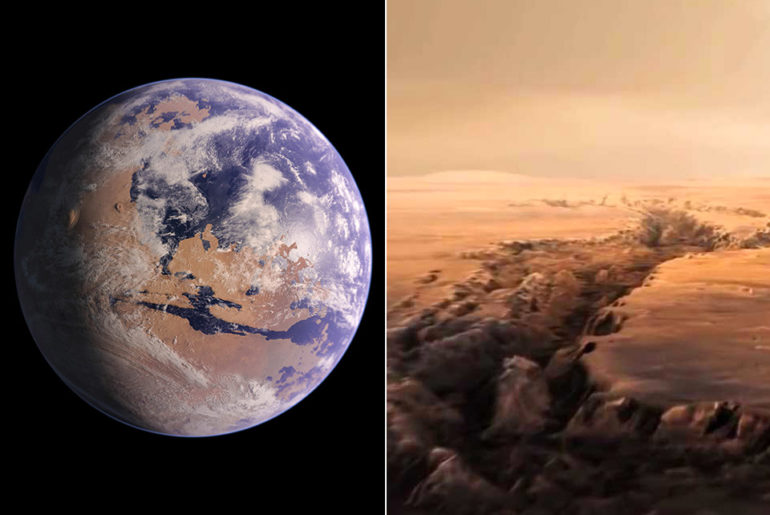
Scientists at NASA have discovered evidence that a region of northern Mars called Arabia Terra experienced thousands of “super eruptions,” some of the largest volcanic eruptions known, over a 500-million-year period. These ancient supervolcanoes spewed water vapor, carbon dioxide, and sulfur dioxide into the air, tearing through the Martian surface approximately 4 billion years ago.
The volcanoes blasted the equivalent of 400 million Olympic-size swimming pools of molten rock and gas through the surface, which resulted in a thick blanket of ash that rose thousands of miles from the eruption site. Eruptions of this magnitude cause the volcano to collapse into a giant hole called a “caldera,” and seven of these calderas in Arabia Terra were the first sign of evidence that the region may once have hosted supervolcanoes capable of super eruptions.
- COMPUTERIZED STAR LOCATING TELESCOPE: The Celestron NexStar 130SLT is a computerized telescope that offers a database of more than 4,000 stars,...
- COMPACT AND PORTABLE: This telescope for adults and kids to be used together is ideal for weekend camping trips or excursions to dark sky sites. Its...
- NEWTONIAN REFLECTOR OPTICAL DESIGN: The NexStar 130SLT is the largest in the SLT family. The 130mm aperture gathers enough light to see our Solar...
Each one of these eruptions would have had a significant climate impact — maybe the released gas made the atmosphere thicker or blocked the Sun and made the atmosphere colder. Modelers of the Martian climate will have some work to do to try to understand the impact of the volcanoes,” said Patrick Whelley, a geologist at NASA’s Goddard Space Flight Center in Greenbelt, Maryland, who led the Arabia Terra analysis.



